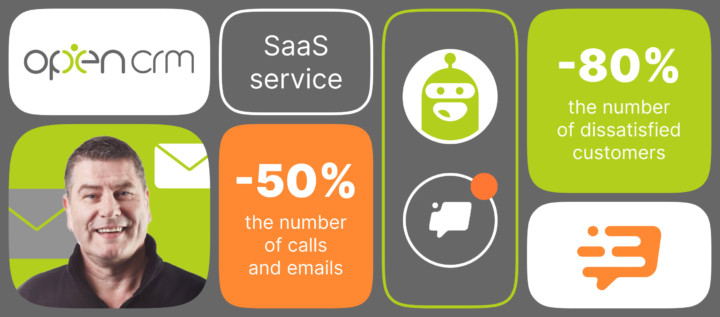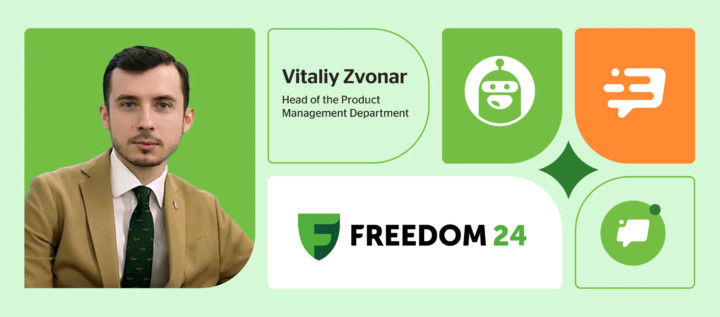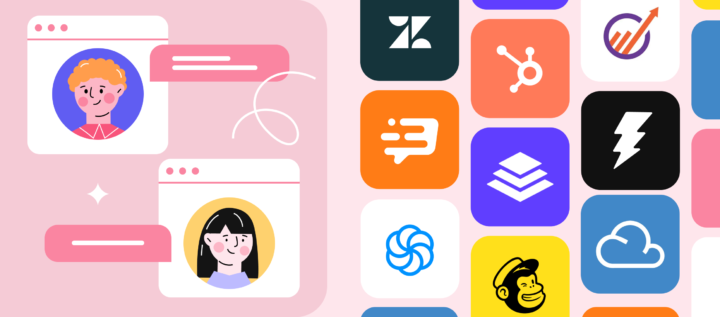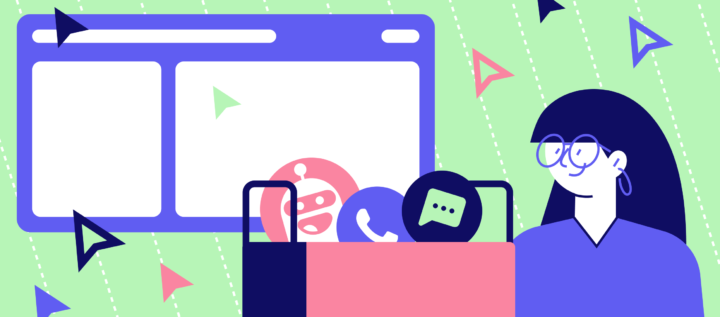10 customer engagement strategies to nurture fruitful relationships with your customers
Learn how to provide in-time conversational experience on your website with the best customer engagement tips, scenarios, and tools
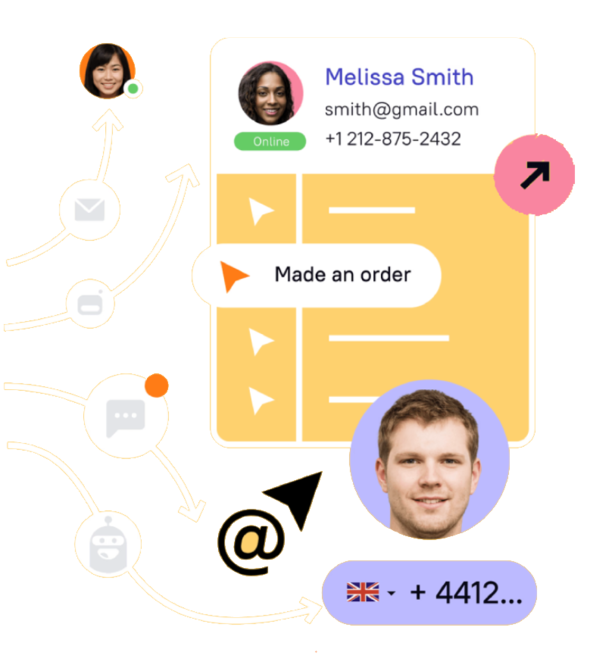
Part 2
10 customer engagement strategies to nurture fruitful relationships with your customers
Have you seen “The Minority Report”? There is a scene when Tom Cruise comes into a clothes store. A virtual assistant scans his eye and greets him like a friend:
“Hello, Mr. Yakamoto. Welcome back to the Gap.
How did those assorted tank tops work out for you?”

Image source
Back in 2002, that scene looked futuristic.
In 2022?
It’s the reality (luckily, except for eye scanning.)
Knowing it or not, Spielberg gave us a vivid example of how to engage each customer. Following the director, we’ll share 10 of the best tactics to grow your website conversion via enhanced customer experience and communication.
To save you time, we also prepared a customer engagement strategy template to help you deside on campaign steps, tools and offer.
The template is ideal for building a lead generation, conversion, or nurturing marketing campaign. It includes variations of:
- target actions
- tools
- value to offer
- messages copy.
Grab it here 👇
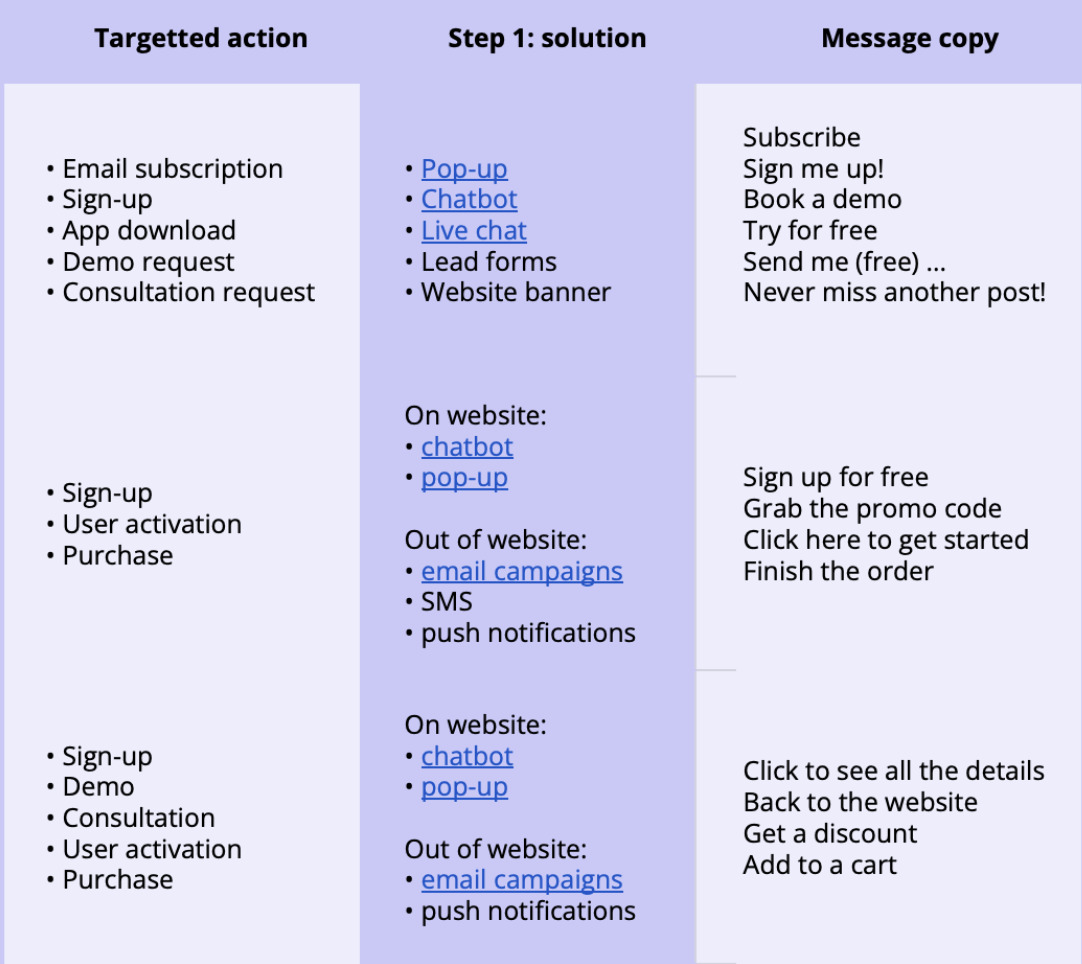
Thank you! We’ve sent a template to your inbox
Okay, I think we’re ready. Hold tight, marketers, the trip will be fast and intense. Tom Cruise style!
Find out your customer’s journey
Luckily for all of us, eye scanning is a thing of the distant dystopian future (we’ll try to stay away from conspiracy.) But it doesn’t mean you can’t get data on customers website activity. In fact, you should get it.
To create a successful customer engagement strategy, you need to explore each step of a customer on your website. Visitors behavior tracking will help you understand who you are talking to and what they need to offer the best solution.
Monitor customers:
- Page visits, exit intents, button clicks, and any field-filling events.
- Collect all the data in one lead card.
- Enrich it with customer data from your CRM and other services.
With this data, you can create personalized automated workflows for your engagement strategy at different stages of the marketing funnel.
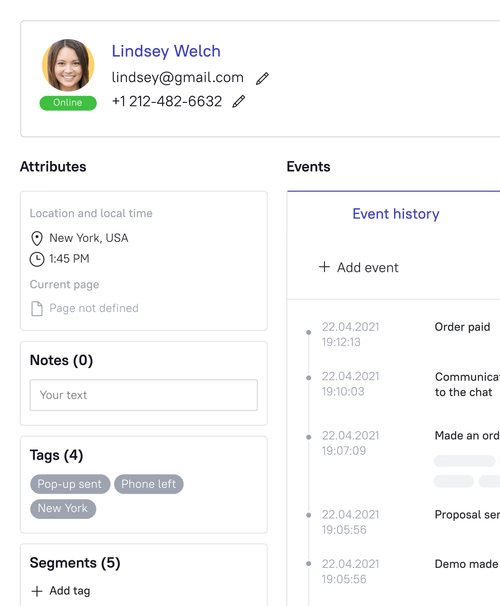
Greet and assist potential customers
Live chat
Start engagement of a potential customer with a warm welcome in a live chat. Segment the audience and set up personalized triggered messages for each group.
A reserved “How can we help? We’re here for you 😊” might be enough for newcomers. This way, customers will know where to go in case they face a problem.
For the returned ones like Mr. Yakamoto, it can be more informal and friend-like. Referring to a customer’s previous experience is also an excellent engagement strategy. It helps pick up the conversation right where you stopped last time.
Segment the audience and send proactive messages at different customer journey stages. It’s one of the best customer engagement strategies! Our customer OpenCRM company did it and increased the number of overall conversations by 400% 👇
Pro tip: you can also follow the example of the Gap from “The Minority Report” and set up a virtual assistant. In our reality, a chatbot comes in handy for this task.
Chatbot
This is a story of how the Dashly chatbot helped digital school visitors make decision about a course choice. To do that, on the “Data Science from scratch” course page company marketers engage visitors in a conversation to dispel their doubts and communicate the school course value.
The chatbot doesn’t offer students to apply for a course out of the blue. Instead, it gradually qualifies and support a lead.
The chatbot helps SkillFactory customers in taking the education path and navigating personal career challenges. This way, a customer doesn’t have to wander around the site learning about the courses. They get advice right on the same page.
The result:
— 7,5% of visitors who saw the message shared their emails,
— 5,3% of visitors who saw the message shared their phone numbers.
Capture leads with a special offer
Make customer relationship with your brand mutually beneficial. It’s the key element of a successful customer engagement strategy and experience.
Quid pro quo.
The easiest way to do it is to launch pop-ups on your website. Create a triggered message and offer a helpful guide, product demo, or a 7-day free trial in exchange for the potential customer email.
Mofy.life used this tactic to increase customer engagement on their website. On Black Friday, they offered a 50% discount in exchange for the customer email.
Thus, they not only increased their marketing lead base but reached out to a bigger number of people.
This pop-up resulted in 2x higher conversion into purchases compared to the same period a year before.
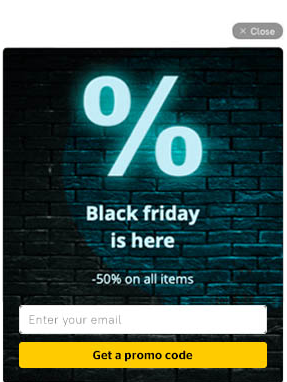
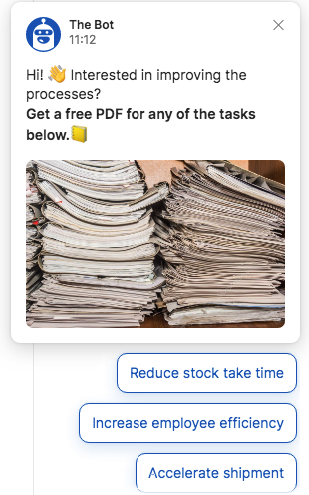
Dashly customer KVR, a mobile software developer, chose another marketing tactic. The company launched a chatbot to grab the emails of potential customers.
This customer engagement strategy is based on a chatbot. First, it asks visitors qualification questions. At the end of the conversation, it offers them to download a relevant PDF.
All the collected info about leads went to the salesman’s CRM automatically.
Find out 13 ready-to-use campaigns templates to configure a chatbot on your website and:
- collect leads;
- qualify leads;
- encourage your users to publish a case study;
- increase the number of orders;
- recommend goods, etc.
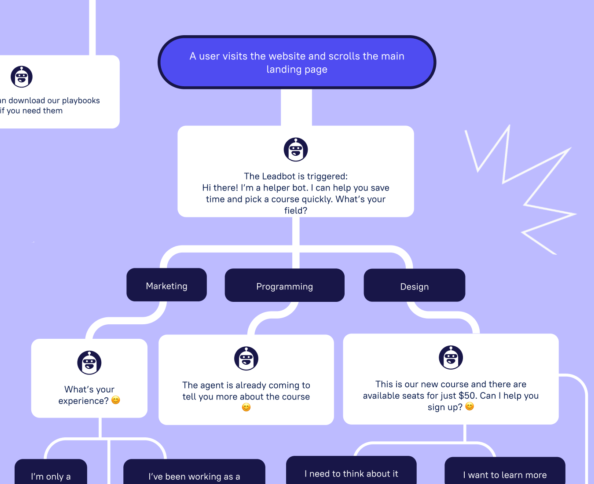
Download 13 chatbot campaigns to implement customer engagement strategies
on your website 👇
Thanks! Now check your inbox
Automate customer onboarding
If you are a SaaS brand with a sophisticated product, onboarding is essential for customer engagement. Show customers how your service works and help them set it up. There are two main strategies for it.
Help customers to get to know your brand and products with a chatbot
The first way to grow brand awareness is more interactive and works right on your website. Tell about your company and main features in a couple of short messages via a chatbot. Support them with instructions, if necessary.
One of our customers is a CPA network whose work might be quite tricky to figure out without help. So the company set up a customer onboarding chatbot that:
- gives primary information about the company;
- qualifies potential customers with questions about their experience;
- tells them about the major advantages of the product.
As a result, user activation sped up by 2.5 times!
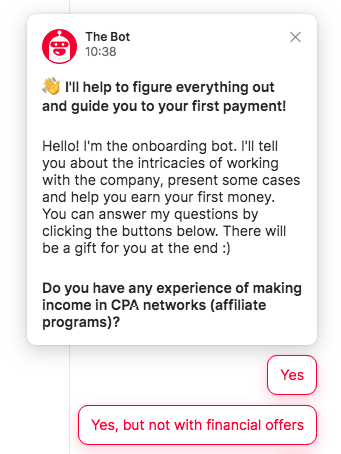
Customer Engagement Emails
Triggered email campaigns are another great tool for strategic customer engagement. They’re suitable for onboarding in particular. We in Dashly use them all the time. Here’s an example 👇
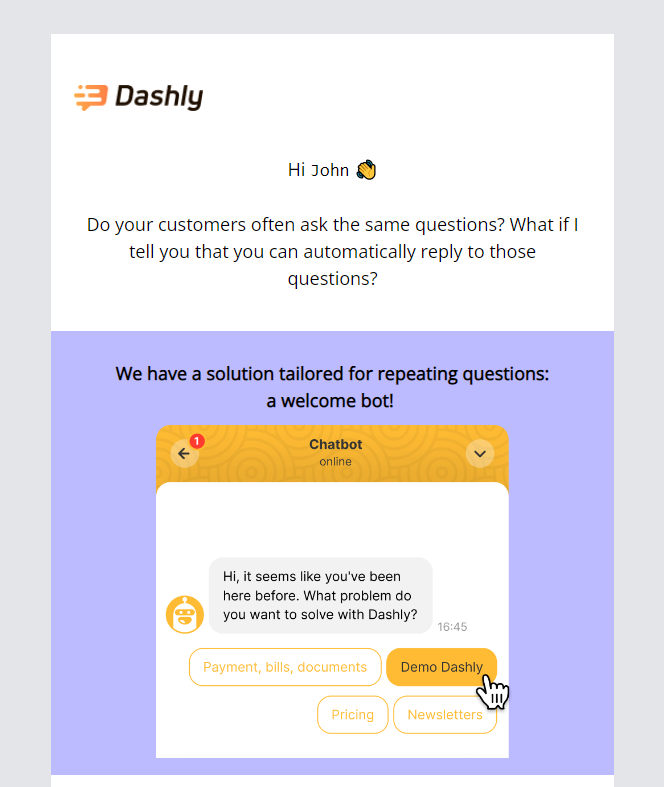
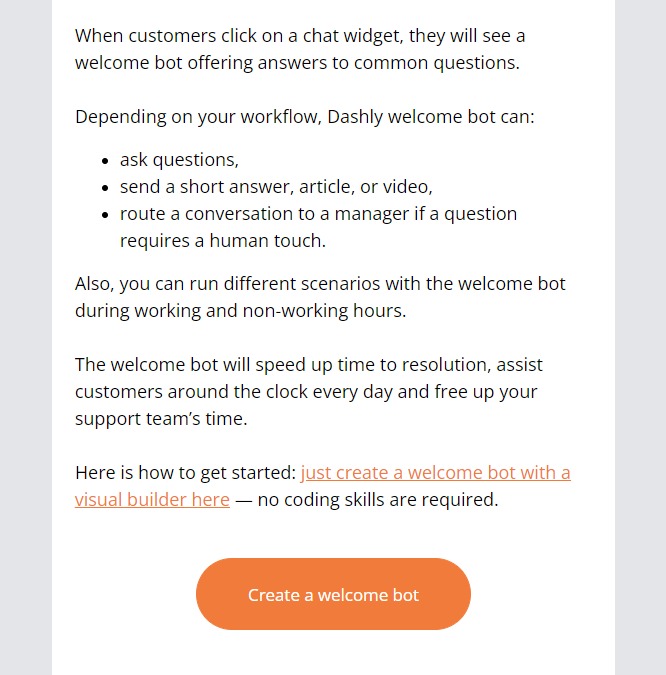
Tell customers about your product, its functions and value. Share some useful materials. Don’t forget to link back to your website or social media!
Popups to improve the customer onboarding experience
Freedom 24 is a platform where you can invest in stocks, ETFs, and bonds or buy a stock at IPO prices. But investment is a field you need time to think about before a start. And sometimes, this pause lasts too long. Fearful of risk, some customers who have an account postpone the solution and become “sleeping” ones.
To engage them to finish the onboarding and start investing, Freedom24 company marketers launched a multichannel campaign. It includes popups on the website and in the app combined with email newsletters to convert registered users into paying customers.
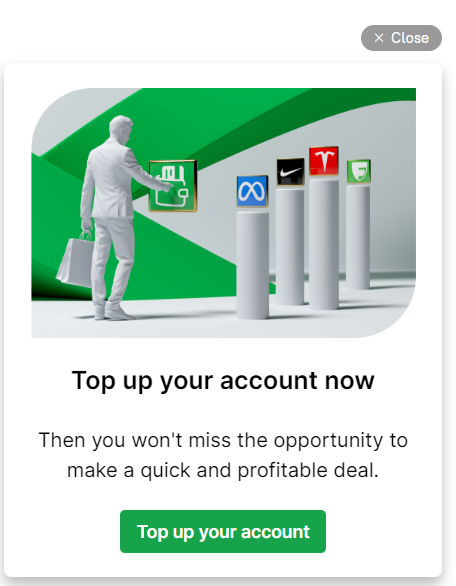
the app for users who have an account.
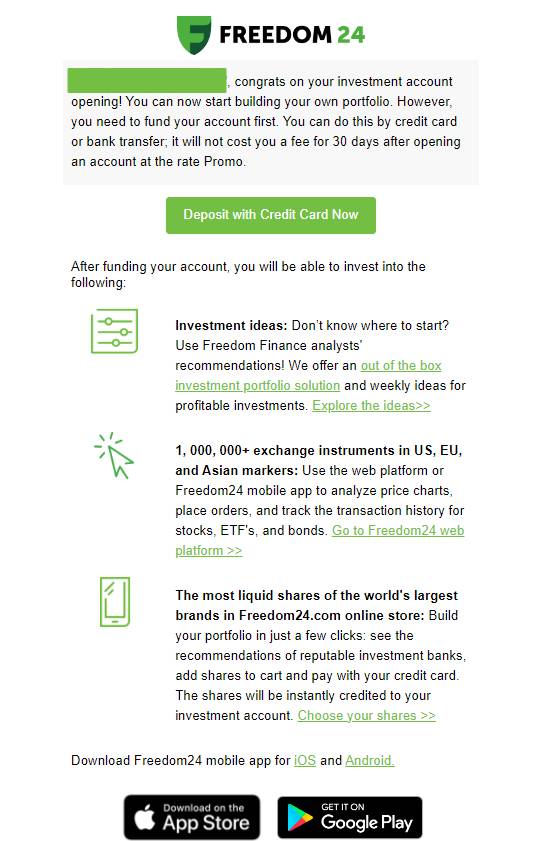
The result: There are 18.6% of app users and 66.55% of website visitors who see it during a month.
Read the case study:
Give a hand on the trickiest pages
Nowadays, 88% of customers expect a company to have a self-service. So it has to be in your engagement strategy. Always leave potential customers an opportunity to look for answers themselves.
Improve your customer experience by launching an FAQ chatbot. LeadGen App, a company for lead generation, set up a virtual assistant on the “HelpCenter” page to increase engagement and offload customer support agents. Here’s what it looks like:

The chatbot quickly resolves simple queries and shares tutorials and videos.
Pro tip: integrate your chatbot with a knowledge base to share articles in a chat widget.
In a month, 41% of customers interacted with a chatbot, which is almost twice bigger as the number of people who contacted a human agent in a live chat. This customer support tool worked even better than LeadGen expected.
Try Dashly visual builder to create a customer-engaging chatbot without a line of code.
Retain those visitors who intend to leave
Don’t miss a single opportunity to engage customers. Even when they want to leave your website.
For example, before customers leave, remind them about a free trial period to test your product without risk to their money. Another great method to return customers is to offer them a free demo. Nobody will present your product better than your sales reps.
You can catch leaving customers with pop-ups. Triggered messages can become a very effective tool for your engagement strategy.

By the way, we do offer a free website assessment.
The best way to win customer loyalty again is to remind people of your product’s value and advantages over competitors. What makes you stand out among the others?
Re-engage inactive subscribers
An inactive lead doesn’t mean the game’s over.
Shoot them a friendly follow-up email with the hottest offer you have. It also works for those who enjoyed your service on a free trial but then quit. Or customers that don’t visit your store for a long time.
It’s the case of one of our customers, an online platform for Instagram growth. They offered their inactive subscribers a free account audit via email. These re-engaging emails brought them +$1.5k of revenue.
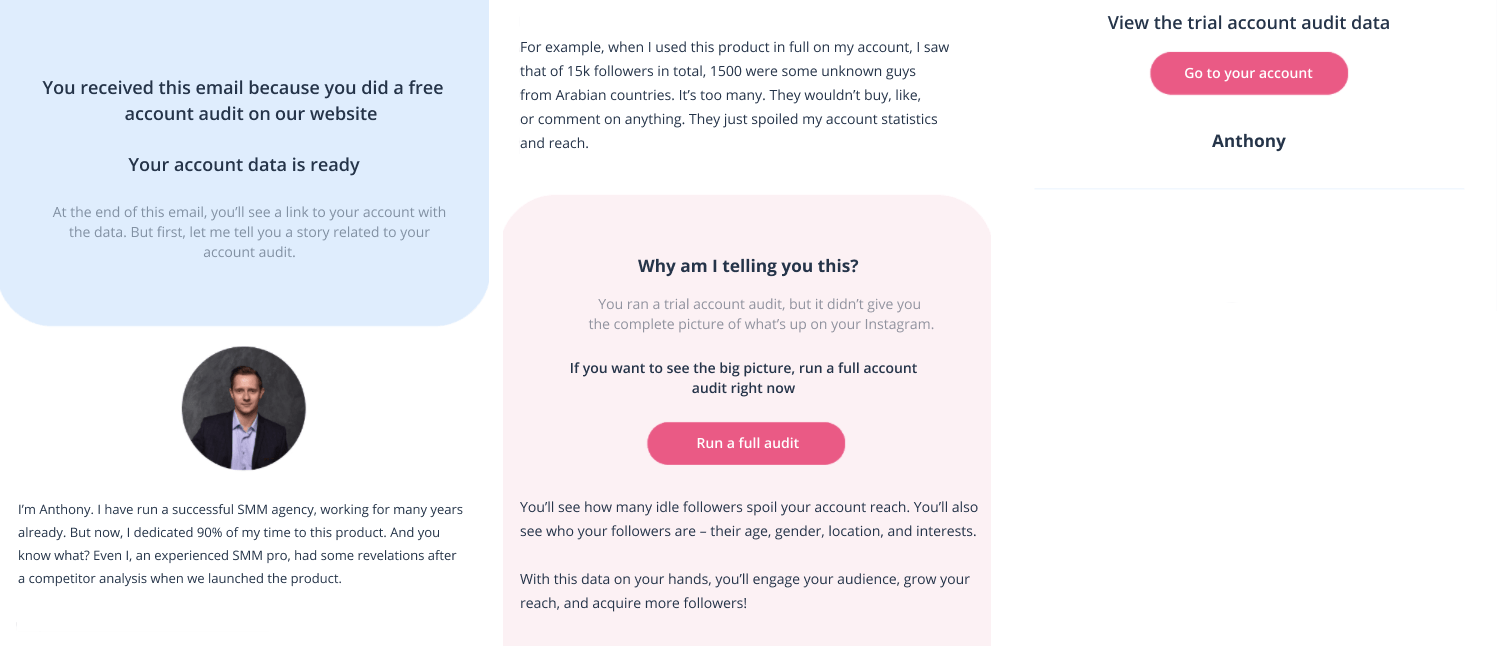
Pro tip: don’t overload customers with messages. If they really intend to buy, one or two emails will be enough.
Stay on the radar with push notifications
They’re short. They’re concise. They keep website visitors and app users updated.
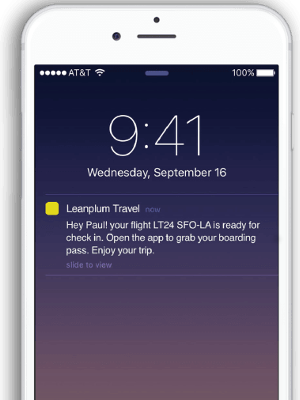
Sign up to launch push notifications for your app.
It’s one more useful piece of your customer engagement strategy. If a website visitor allows sending push messages, they’ve already made the first step. Now it’s up to you.
Special offers, sales, important product updates — there are plenty of occasions to remind customers about yourself and lure customers back to your website.
Besides, push messages are available both on desktop and mobile. So make your customer service work both at home and on the go.
Free expert insights to boost your marketing strategy and raise conversion to a target action by 10%
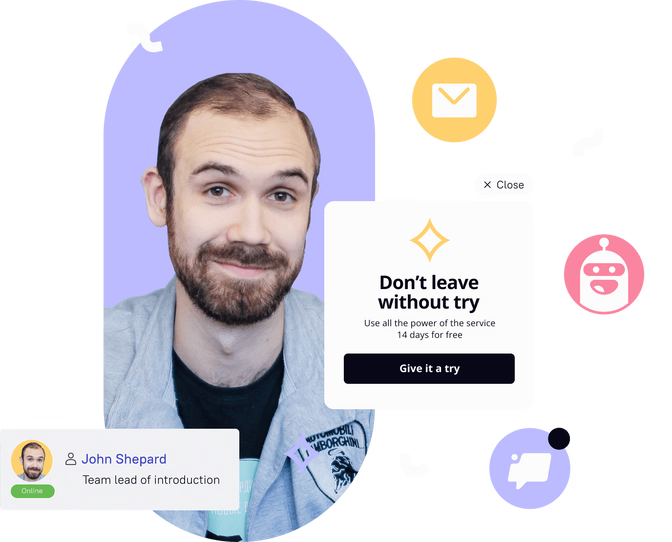
Set up omnichannel engagement on socials and messengers
Don’t limit yourself to website engagement.
Spark interactions in Instagram/Facebook DMs or offer assistance via WhatsApp. All messages will be collected in a single inbox. It allows you to set up seamless omnichannel customer engagement.
How do such integrations work? Let’s consider the Dashly example:
1. A customer DMs you on Instagram, mentions your account in their story, or reacts to yours.
2. This interaction is sent to your inbox as a message.
3. You reply to it in the same inbox widget.
4. The customer gets your reply in their DM on Instagram.
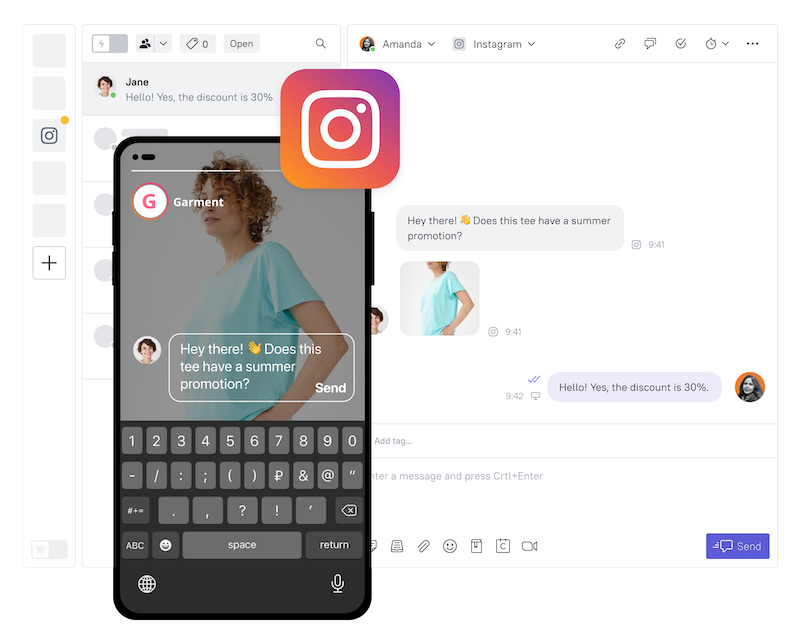
Don’t forget that a visually appealing presence on social media platforms like Instagram is crucial. For that, you can use tools like Wepik to customize Instagram stories for free and ensure your brand stands out.
There’s a second strategy: offer a few channels of communication yourself.
When a person lands on the Dashly website, we engage them with a triggered message in a live chat. After that, they have four options: use the website widget or move to Facebook, Instagram, or WhatsApp.
Here’s what it looks like 👇
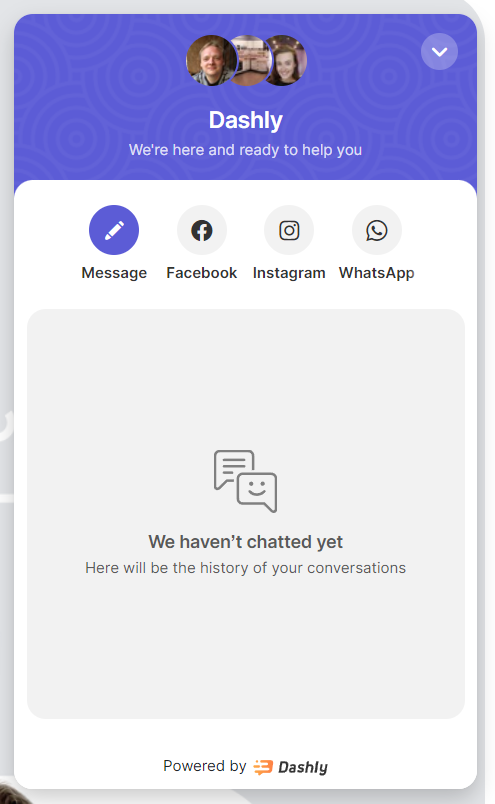
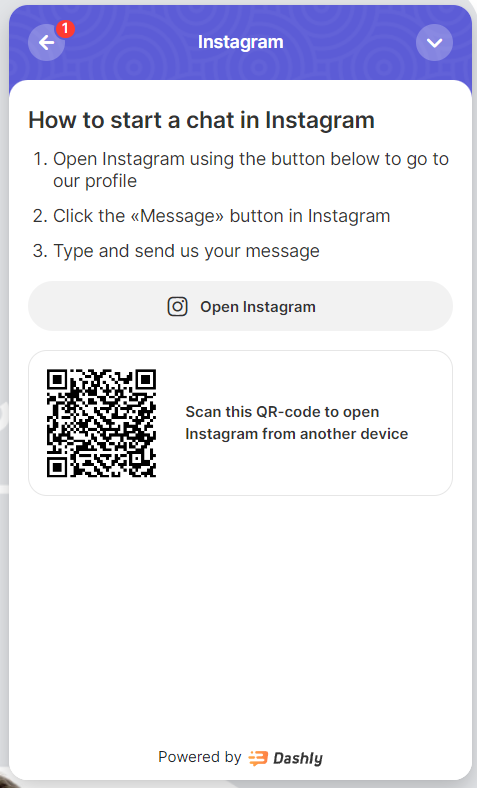
Sign up for Dashly to set up omnichannel customer engagement strategies for your business.
Personalize your customer experience by demonstrating that their comfort and convenience are your top priority.
Pro tip: if you want to enhance engagement with help of customer engagement platforms, choose one that allows integrations with socials and messengers. This will give you access to a wider audience.
Regular communication is the key
Taking the first step in communication is crucial. But keeping in touch is even more important. Luckily, there’s a wide range of strategies to keep your engagement consistent. Pick the one you like more, or combine them (we opt for the second option.)
Remind customers about yourself with weekly newsletters
If your product gets regular updates, share them via email campaigns. If you have a blog, here’s another great reason to jump into a customer inbox — share your digest of new materials.
Dashly subscribers get a fresh email every Thursday morning (or Wednesday evening, depending on your side of the globe).
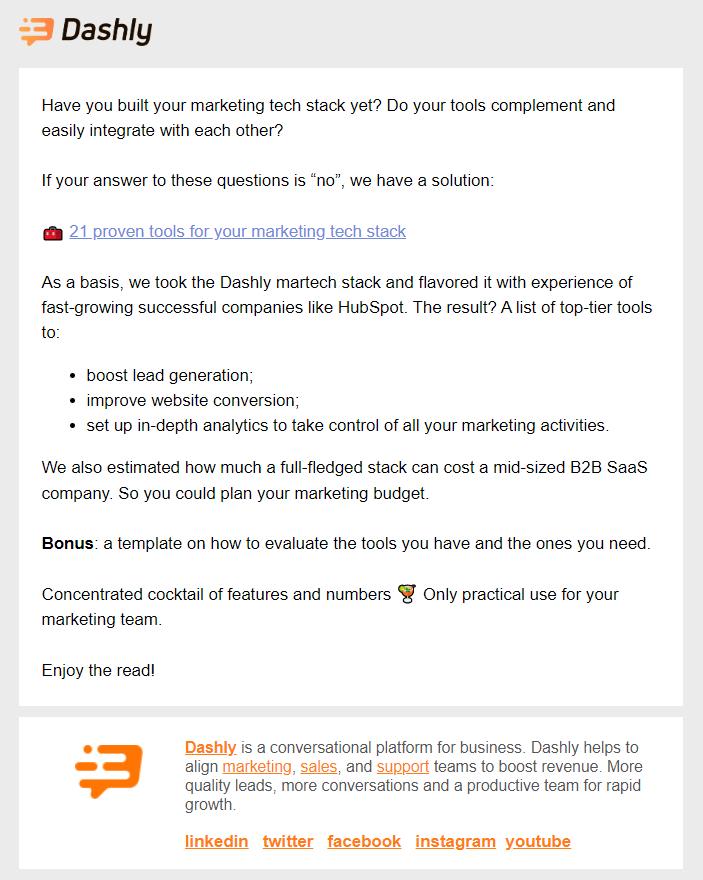
Set it up with Dashly, start with 7 days of a free trial.
Improve customer loyalty and product with customer feedback
If you have a new, important feature coming, invite customers to test it. Being the first one to try something is exciting, isn’t it?
Whether you prepare a big release or not. Nobody knows better what your business is good and bad at as your customers. To automate this process, set up a chatbot.
- Launch a new feature (you can also announce it with a chatbot).
- Collect the feedback. You can do it with pre-defined answers or opened ones.
- Analyze customer responses to find growth points.
Voila! You got your food for thought, and customers got engaged in the development of their favorite product.

Pro tip: the website’s not the only place you could find valuable feedback. Check out the comments section on social media. If you develop a SaaS product, be active on services like Capterra and G2. Just don’t take comments too personally ❤️
Include product recommendations in your customer engagement strategy
While you should work on extending your leads base, never forget about returned customers. According to business.com research, they spend 67% more than new visitors.
Why not show them such a pop-up?
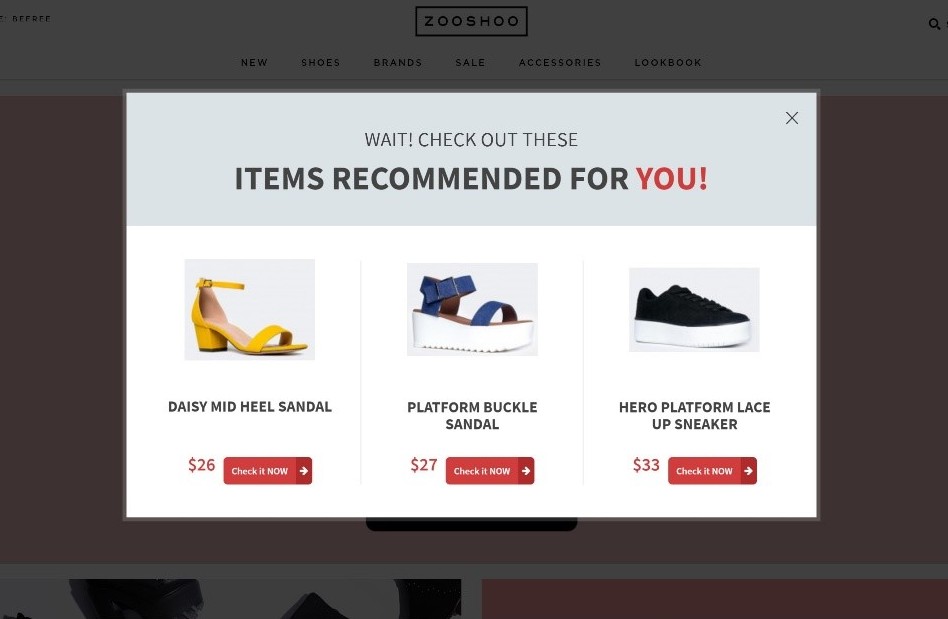
Try to build it in Dashly visual builder for free.
When a customer completed their first purchase, encourage them to come back again. So, for example, if a girl purchases hills in an online store, she can find inspiration for her next purchase.
Easily arrange your personalized pop-up scenario
in Dashly visual builder.
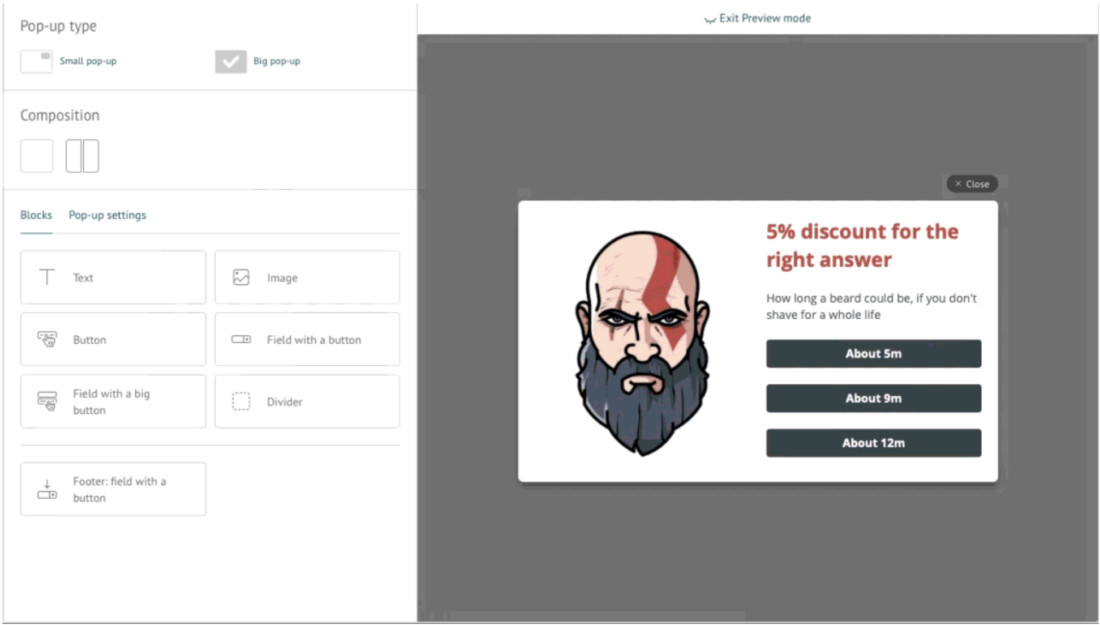
Finish line
The race is over! Ten strategies and just five engagement tools to activate your customers. I think we made Mr. Cruise proud.
Wrapping up, these are major tools that will help you create strong connections with your customers:
- chatbot;
- live chat;
- pop-ups;
- emails campaigns;
- push notifications.
Putting all of them into practice simultaneously might be overwhelming. So start smoothly. Experiment, check which customer engagement strategies work best for your business, and keep improving your engagement.
And if our race is over, yours is only beginning 😉
FAQ on customer engagement strategies
What is a customer engagement strategy?
We can define customer engagement strategy as growing people’s loyalty to your brand via regular interactions at each step of the marketing funnel.
There are platforms like Dashly that help businesses enhance their engagement strategy and improve customer communication.
How to increase customer engagement on the website?
There are different strategies for it. You can set up tools like a chatbot or live chat to proactively engage customers in a conversation on the website. Triggered messages like pop-ups and emails can work out too.
You can also go beyond your website and set up omnichannel customer engagement on your social media and messengers.
Is there some customer engagement plan?
There’s no universal tactic for customer engagement. Your choice of tools and tactics will depend on your customer preferences and marketing funnel.
But Dashly experts can help you with making this decision. They’ll analyze your website communication and find growth points. Based on this analysis, you’ll be able to start planning your customer engagement strategy.
Book expert’s assessment for free.
Read also:
- How to implement user tracking on website: guide, tactics, and tools
- Top 10 user activity monitoring tools: tracking features, price, cons and pros
- Acquisition funnel marketing: Grow customer conversions at each step of user journey
- The top 15 inbound marketing tools: harness digital power and elevate your business
- Top 12 lead qualification tools to deliver your sales hot leads only
- Top 20 best website tracking tools for effective work with visitors
- Top 10 customer segmentation tools to personalize customer communications
- 10 best website personalization tools to deliver top-notch visitors experience
- 12 best AI marketing tools to automate everything [expert edition]
- Top 12 omnichannel marketing tools for your cross-channel campaigns
